POTS lines have served as a great telecommunication medium since 1876 but they’re to retire pretty soon. Putting aside the long-lasting service of POTS lines, they hold certain downsides like high costs. That’s where newer communication protocols like wireless phone service and VoIP come in. They’re a solution to POTS lines’ drawbacks and are rapidly replacing them.
But if you’re still a POTS line user, you must know that most telecom providers are shutting down their POTS lines due to the FCC's recent announcement (more on this below). In this article, we’ll look at why POTS lines are going away and the best replacements available. Let’s dive in.
What is POTS in Telecommunication & Networking?
POTS stands for Plain Old Telephone Service. It’s a telephone service that uses a copper wire network for voice transmission. The POTS telecommunications standard came out in 1876 and has been widely used for networking by using a twisted pair of copper wires. But the use of POTS decreased as Integrated Services Digital Network (ISDN) was introduced in 1998.
How do POTS Lines Work?
The POTS telecommunication service uses a twisted pair of copper wires to connect two or more telephones. A telephone converts the user’s analog voice signals into electrical signals that can pass through the copper cable.
When the electrical signals reach the other user, they’re again converted into analog signals to make them audible. The equipment cables and connection lines used for establishing a POTS network are generally termed PSTN (Public Switched Telephone Network).
Why Should You Replace POTS Line?
It's high time you should consider replacing POTS lines. Here’s why:
1. POTS Lines Are Going Away in August 2022
The Federal Communications Commission (FCC) has announced that large telephone services will be free to cease their POTS lines from August 2, 2022. As a result, many giant providers have already switched to cellular or VoIP networks and terminated their traditional POTS lines services. So, if you’re seeking a long-term communication solution, POTS lines are not the answer.
2. Cost and Maintenance
Getting a POST line requires establishing an extensive copper wire connection between the end-users, which can be quite expensive and time-consuming.
Plus, maintaining a copper wired connection is also challenging. You might need to hire someone to help you set up the connection. Also, if the connection breaks because of a storm or another reason, you’ll have to fix it on your own.
The newer cellular and VoIP landline services offer wireless phone services to eliminate all these issues. This way, they become a more cost-effective and user-friendly solution compared to POTS lines.
3. Dependencies
The traditional POTS lines have various limitations, like a fixed location. They’ll require operating your telephone only from the areas they cover. Similarly, you’ll be limited to using your telephone from a certain location in your home. Plus, if you plan on increasing the number of telephones at your home or office, you may need to install more copper connections accordingly.
Community Phone - The Best POTS Alternative
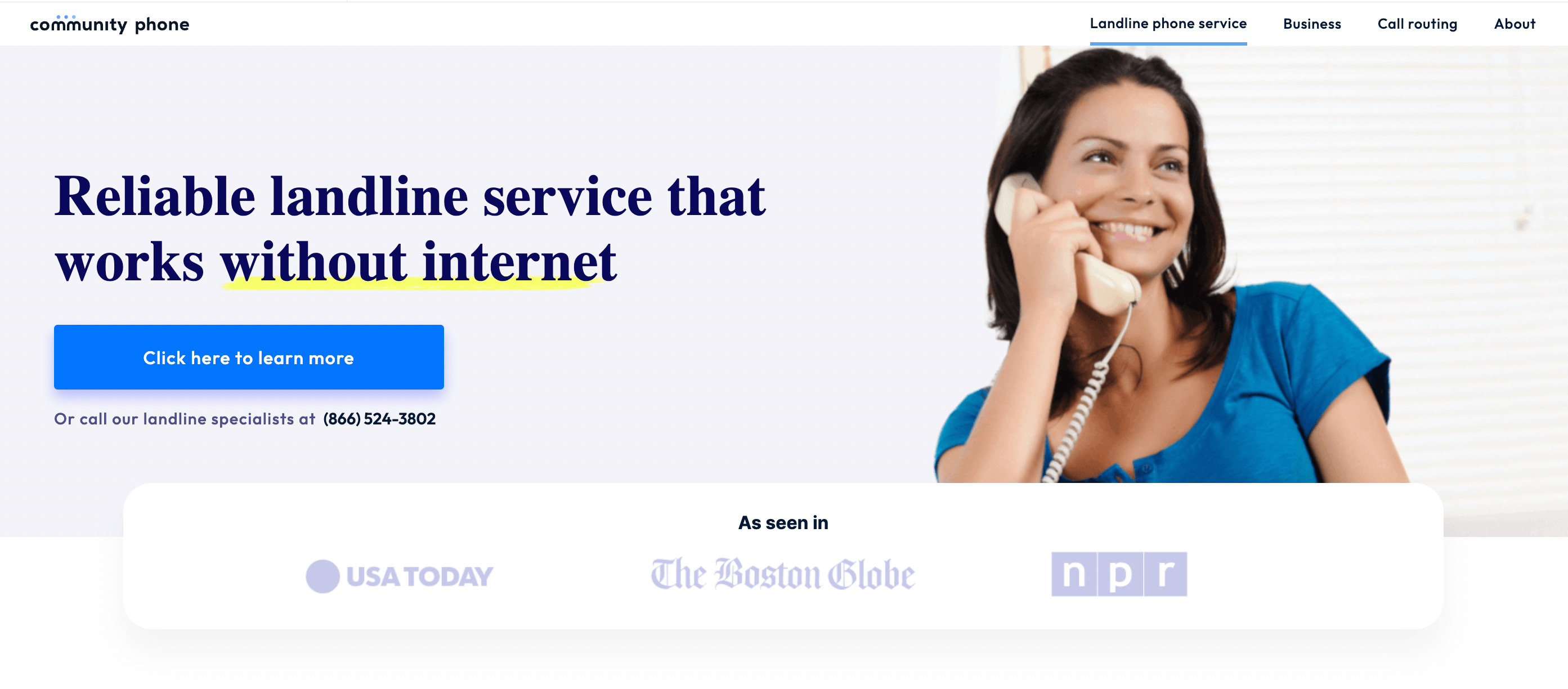
Community Phone is the best home phone service in the US that does not need internet or copper wires. Their wireless Community Phone Base connects your home phone to local cell towers, eliminating the need for high-speed internet to make or receive calls.
Move anywhere in the US, and take your Community Phone service with you, as they provide solid coverage across 99% of the country. You only need a power outlet and a phone to get your Community Phone to work. The unique base design ensures you get voice quality like a traditional landline in rural and low-reception areas.
With Community Phone, a reliable and transparent service provider, exorbitant equipment charges and hidden charges on bills are things of the past. Enjoy features like call waiting, 3-way calling, call history, spam call blocking, home phone texting, and more at affordable prices when you join the Community Phone family. Read on to learn more!
How It Works
The Community Phone wireless Community Phone Base needs a power outlet. Once you power it on, it connects your phone to local cell towers for a dial tone. The built-in antennas amplify mobile signals and ensure excellent coverage and voice quality across 99% of the US, including rural and low-receptions areas. The 12-hour backup battery on the base saves you money on a backup power unit and ensures your phones stay working during power outages.
Save money and time by installing the Community Phone in just a few steps without a technician's help. Here's how you can do it:
- Connect the Community Phone base to a power outlet. Do not turn it on yet.
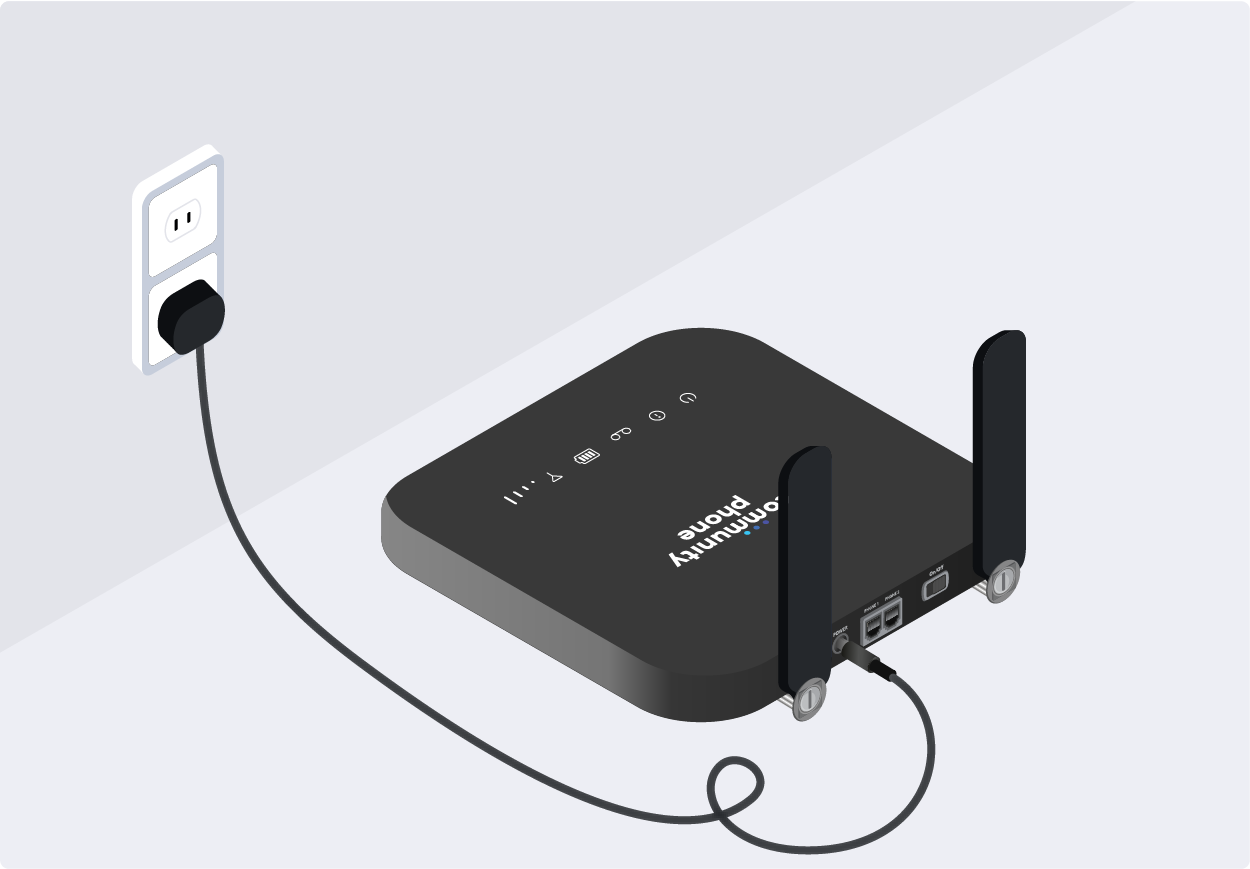
- Hook your phone to the base with a phone cord.
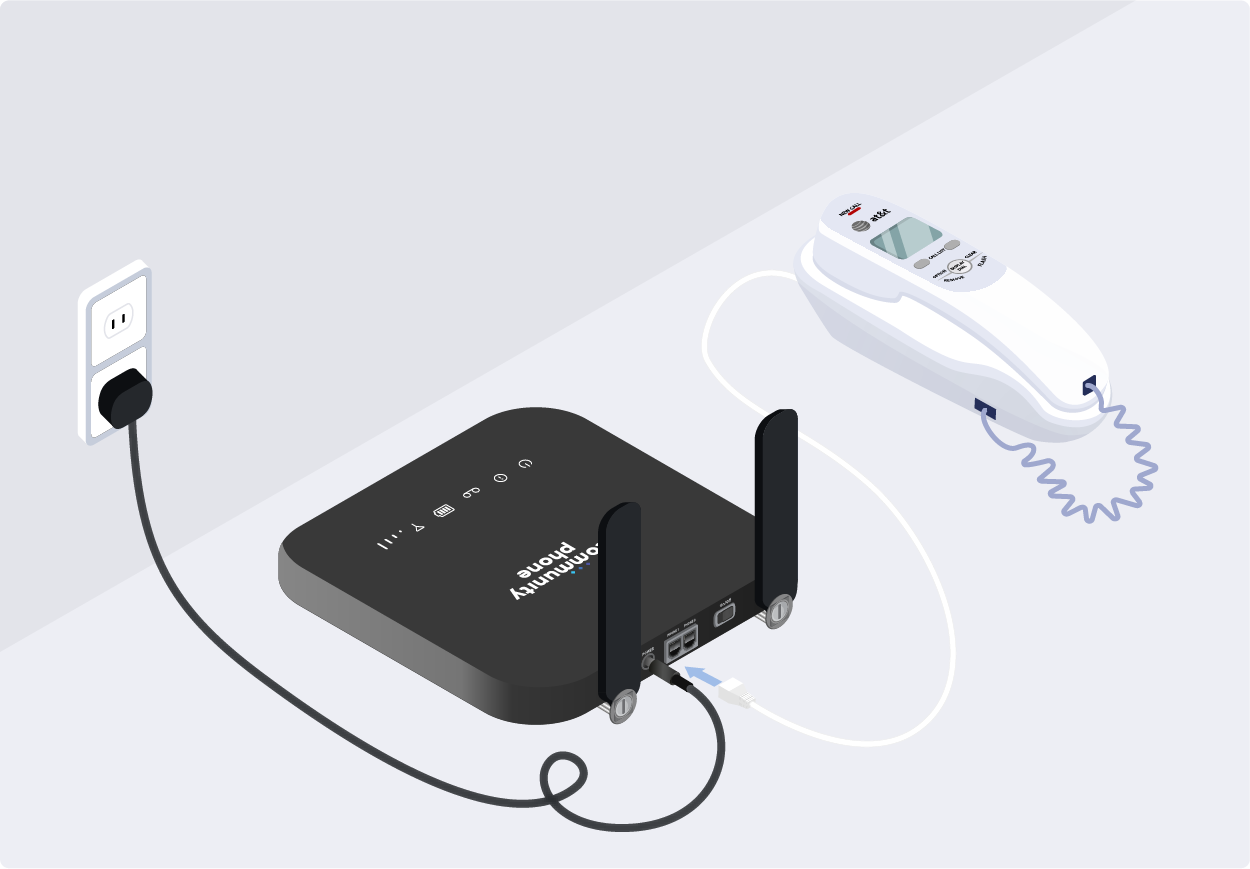
- Toggle the ON/OFF switch on the base to the ON position.
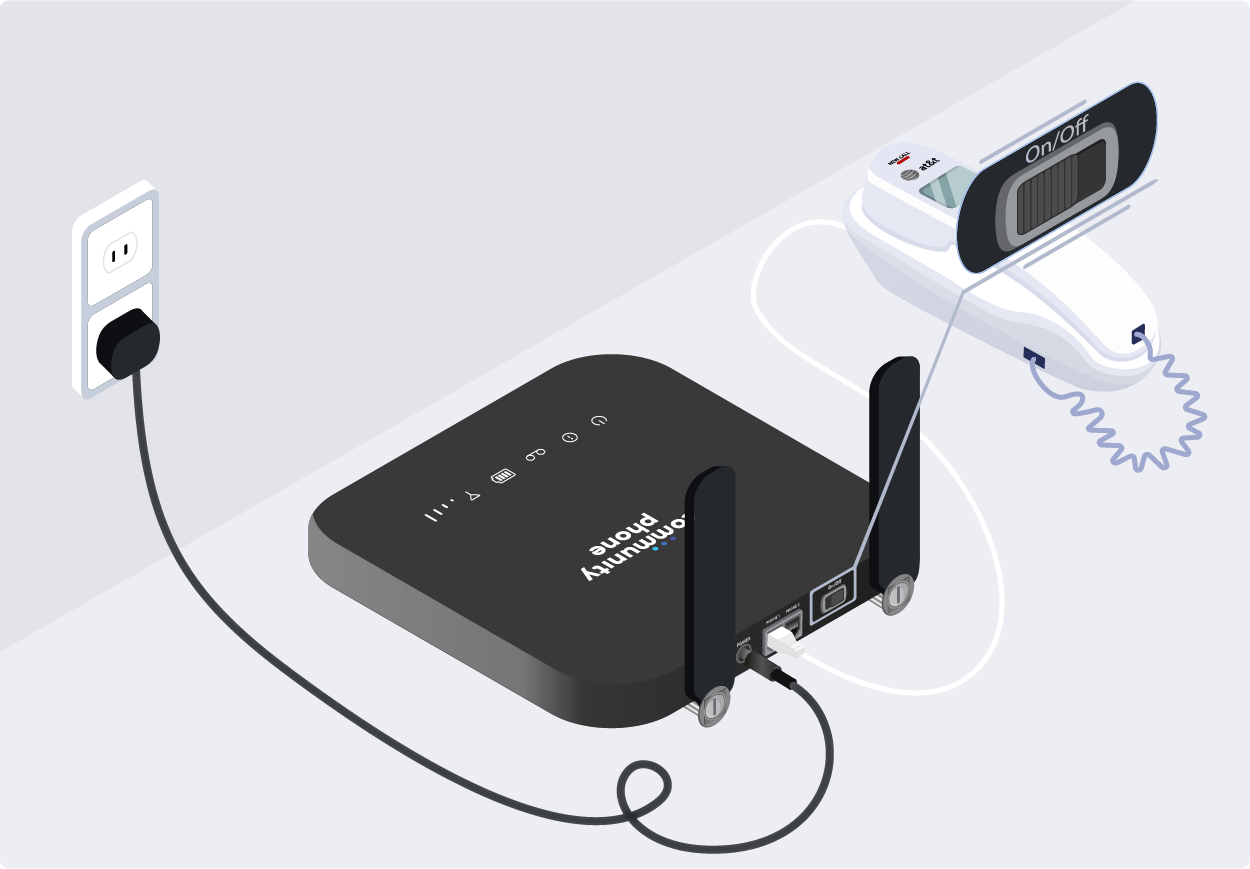
- Wait for 5 mins until the base completes the setup and all the lights turn green.
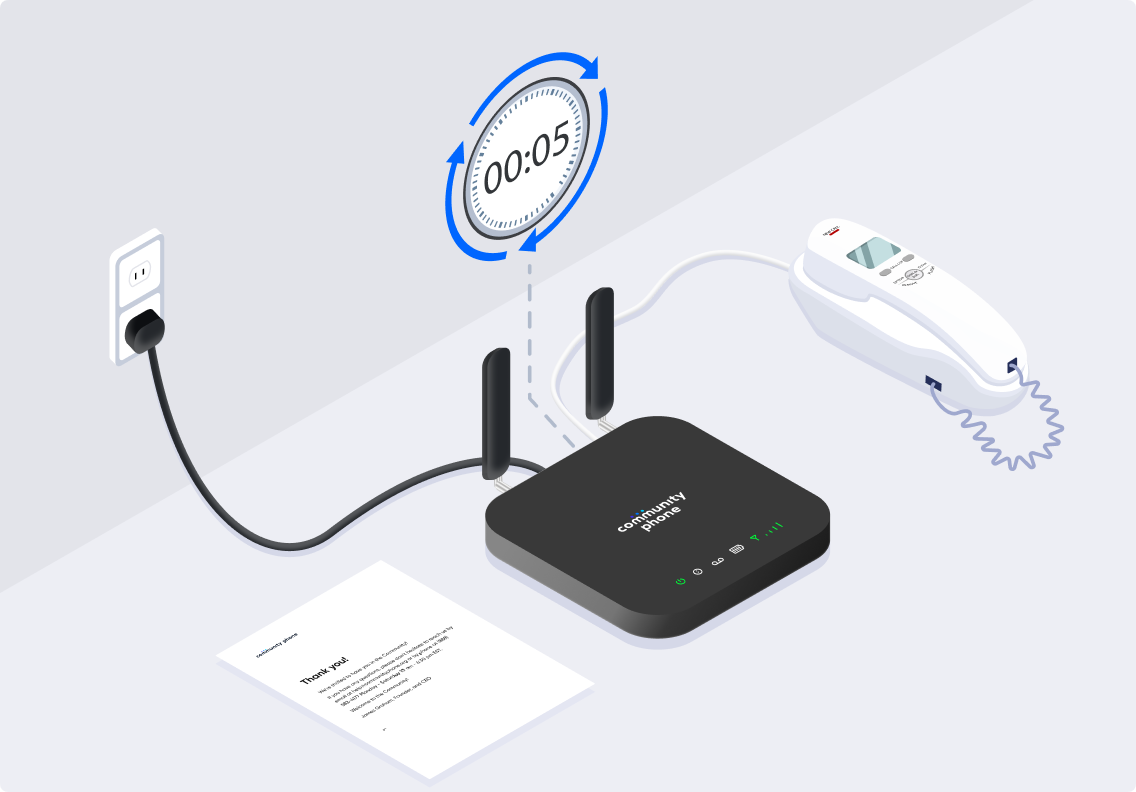
- Make a test call to 866-511-7870 to ensure your phone works as intended.
Fantastic Calling Features from Community Phone
Community Phone provides
- the reliability of a copper-wire landline,
- the freedom of wireless access, and
- excellent VoIP-like features at affordable prices
Here are some features for a beautiful telephonic experience:
1. Spam Call Blocking
68.4 million Americans lost money to phone scams in 2022, a 23% increase since 2021. With scammers being persistent in their brutal attacks, manual call barring and phone features to block spam are no longer effective. According to reports, scammers have found a way around the STIR/SHAKEN protocols implemented by the government for consumer protection.
Get the Community Phone spam-blocker, your one-stop solution to barring unwanted and unlawful calls from ringing your phone. The spam blocker challenges robocalls and blocks them before the call can ring your phone, ensuring protection against spam.
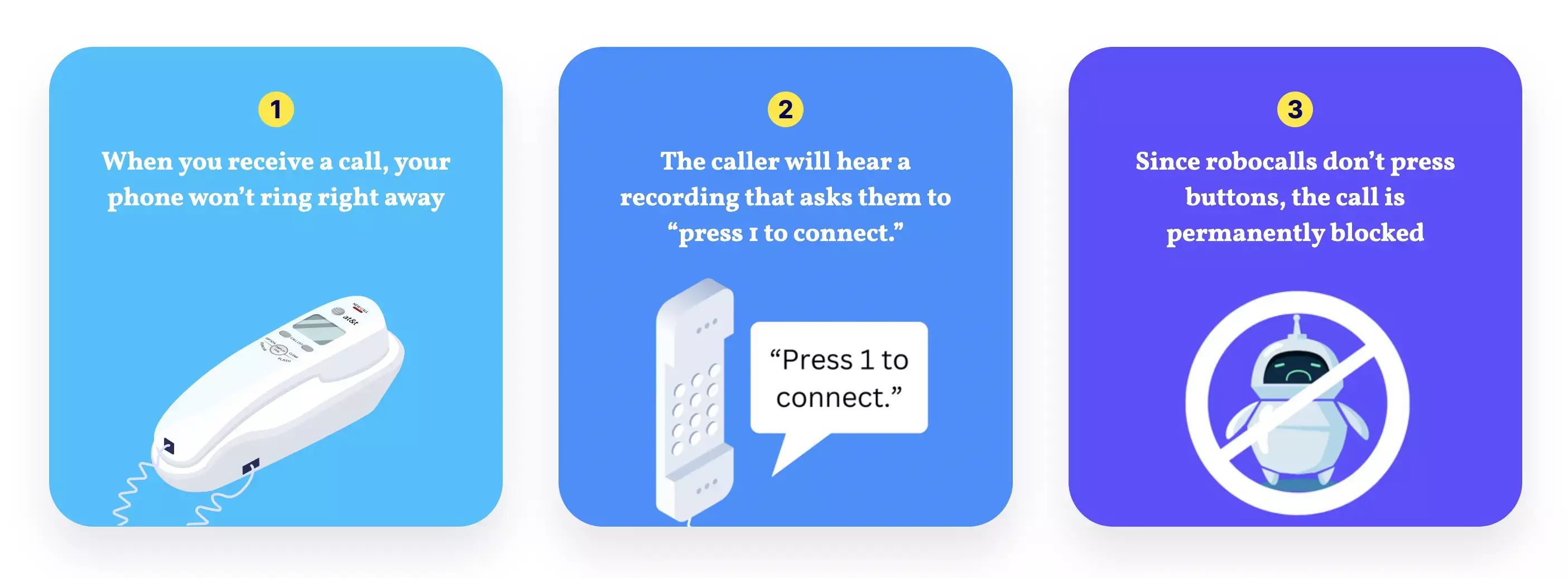
The “Safelist,” a new Community Phone feature, allows you to add numbers you want to accept calls from to a list. Your phone will only ring to let calls from these numbers block all others. You can update this list anytime, or Community Phone specialists will be happy to assist you.
Understanding the need for robust spam protection, Community Phone is launching another iteration of the Safelist soon. This feature will allow you to accept calls from numbers you want and route the rest to voicemail. Since Community Phone will not block other numbers, you can check your voicemail messages and respond to the ones you deem necessary.
The soon-to-be-launched "blocklist" option stops over 6 million spam calls based on an ever-growing database of spam numbers and a spam score. You can actively contribute to this database by adding a spam number to protect yourself and other Community Phone customers from scams and fraud.
Talk to Community Phone specialists to learn more!
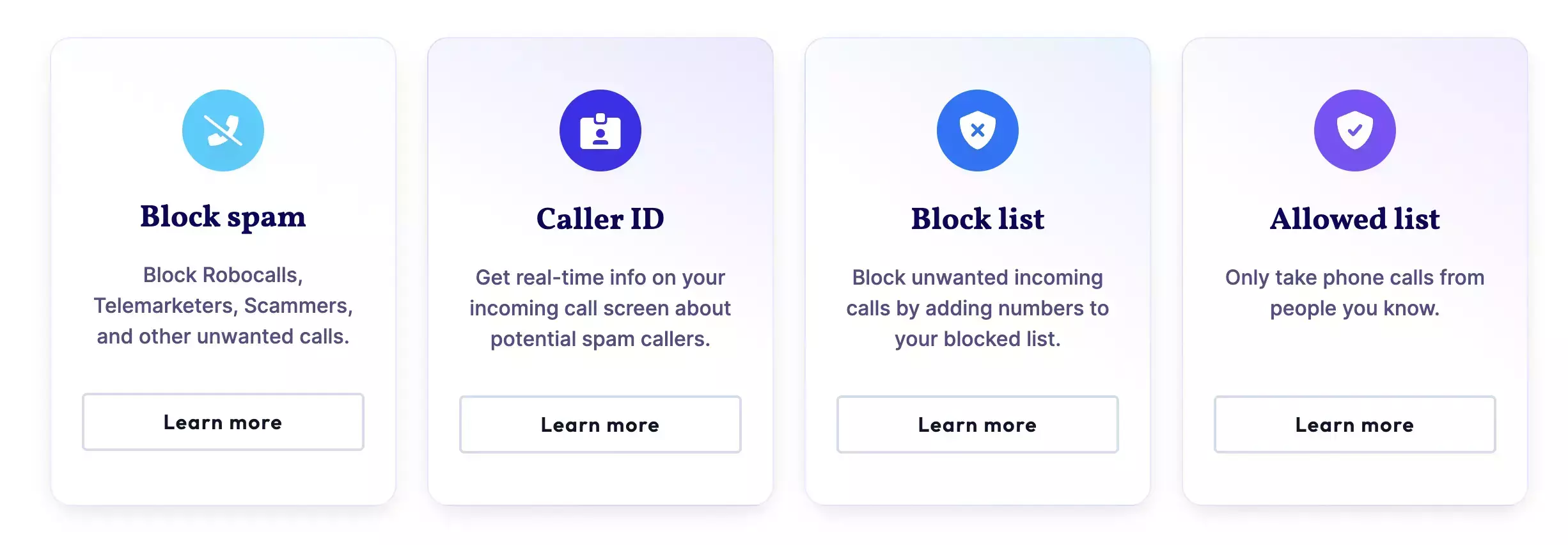
2. Home Phone Texting
Over 65% of customers prefer businesses texting them over calling for fear of spam. To ensure you protect your customer, and engage them in your marketing efforts, use the home phone texting feature from Community Phone.
Sending bulk messages can be counterproductive to your business from a customer connect perspective. Some providers may also flag your number as spam and block it.
Engage with your customers, wish them on special occasions, inform them of product and offer launches, and collect feedback through the Community Phone personalized messaging feature that does not let the customer or service provider block your number as spam.
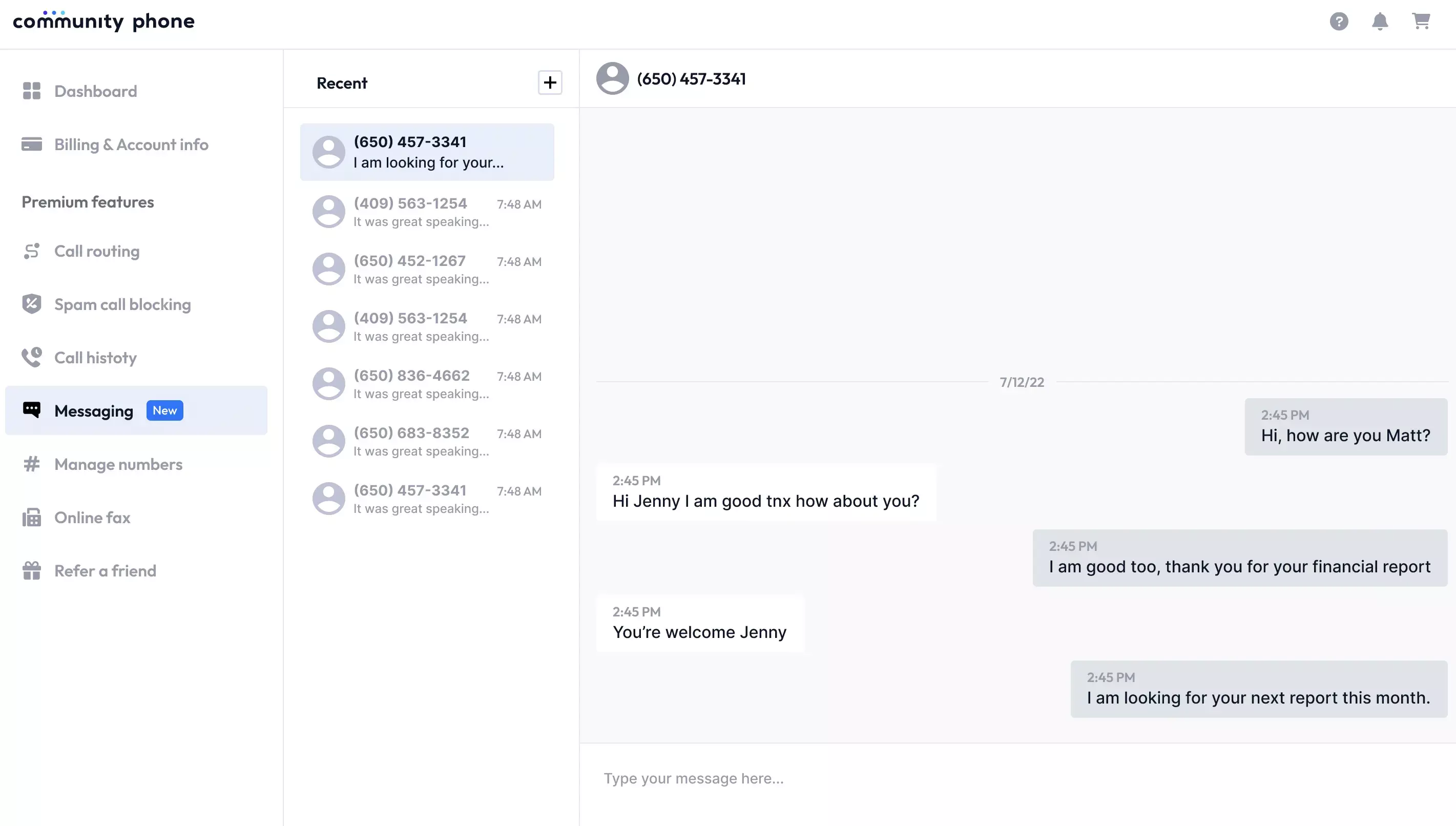
3. Caller ID
Opt for the caller ID feature so the recipient can see your number or name when you make outbound calls. This feature can help loved ones answer your call or return missed calls without mistaking them as spam.
Engage your customers and build credibility when you display your caller ID on outbound calls. This feature will also help customers engage with your business without ignoring or blocking your calls as spam.
4. Call History
Enable the call history feature and access information on incoming and outgoing calls, the name of the caller, the extension number dialed, and the time and duration of the call.
You can use this feature to
- Return missed calls from known contacts
- Store legitimate contacts
- Check caller information against known contacts
- Send a message or
- Block spam numbers.
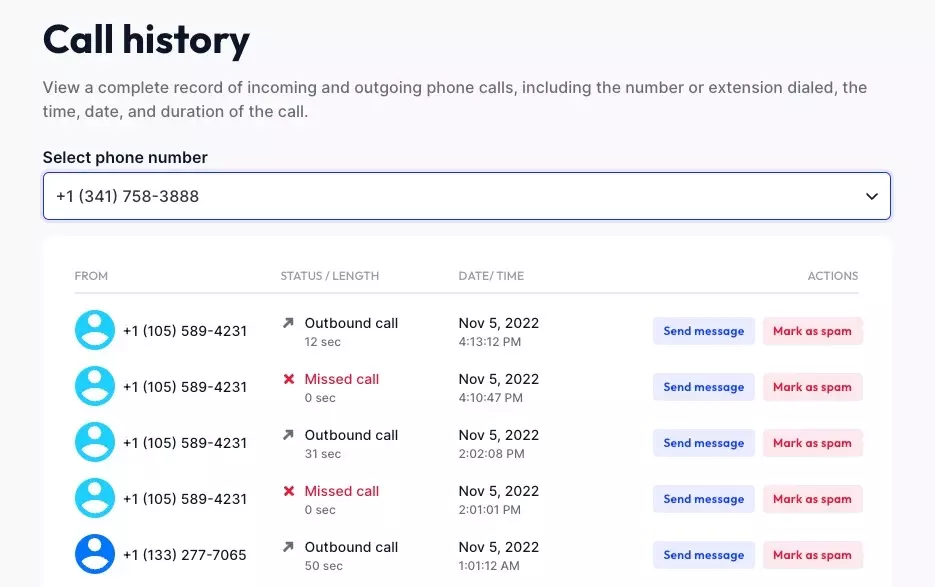
5. Call Waiting
Never miss important calls from loved ones or work with the call waiting feature. Two beeps will alert you of an incoming call when you are engaged on one call. This alert allows you to place the first call on hold and talk on the second one or route it to voicemail.
Benefits of Getting Community Phone
1. Unlimited nationwide calling: Stay in touch with loved ones nationwide with unlimited minutes. If you are a business, use these unlimited minutes to run customer outreach, feedback calls, marketing campaigns, and more. The options are endless!
2. Use your existing phone: The Community Phone Base is compatible with all phone models, unlike VoIP services. So you do not have to buy a separate phone to start using Community Phone services once you sign up.
3. 30-second setup: You or anyone can set up the Community Phone base in under 30 seconds by connecting it to a power outlet and phone. No more expensive and messy technician-led installations!
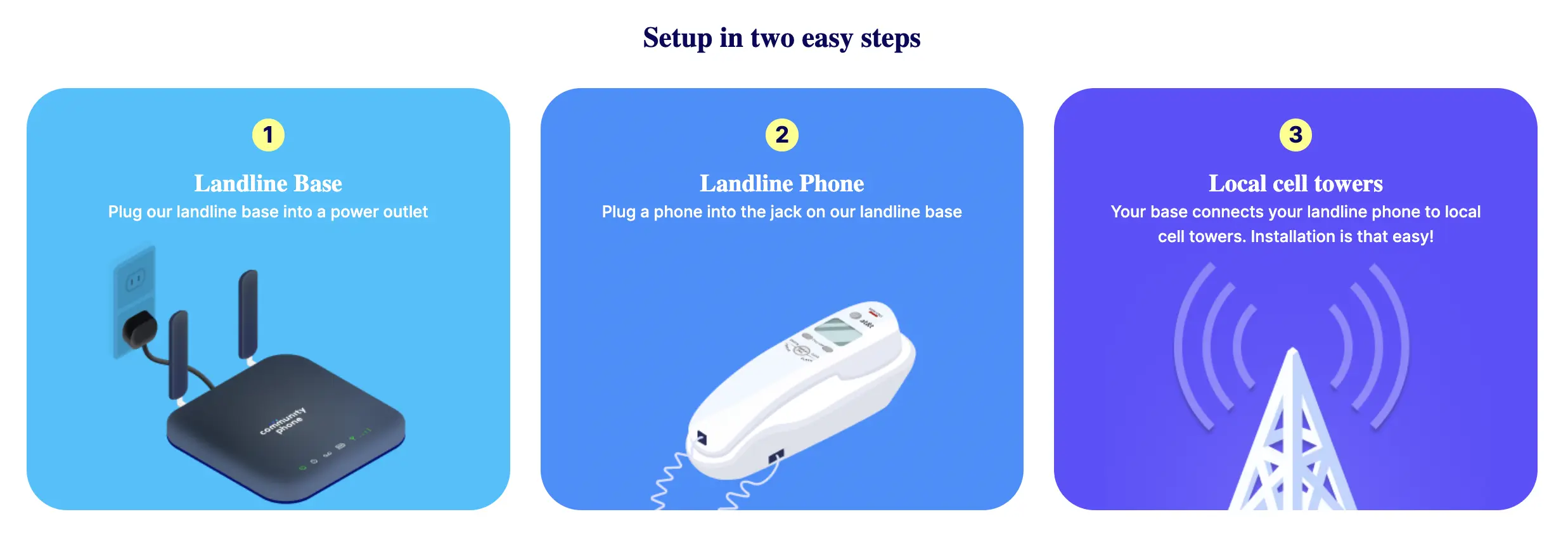
4. Works during power outages: The 12-hour backup battery in the base ensures your phones work during power outages, unlike VoIP phones that will go down during network and power outages.
5. No internet or copper wire connection needed: Community Phone connects your home or business phone to cell towers in your area, eliminating the need for high-speed internet or copper connections.
6. Number Choice: You can choose a new local number FREE when you sign up with Community Phone. They also provide toll-free numbers for your business and vanity phone numbers to boost conversions.
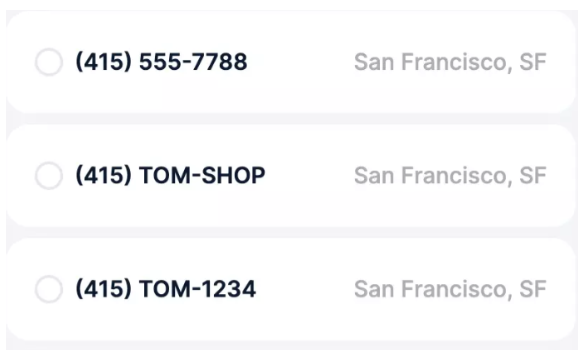
Why Community Phone is the Ideal POTS Line Alternative?
Here we’ll look at what makes Community Phone the best POTS line alternative for anyone:
Uses of Telephone POTS lines
Though the use of POTS lines is limited nowadays, they’ve been used for the following purposes in the past:
1. Voice Transmission
POTS lines were most commonly used for voice transmission. They allowed transferring basic voice over copper networks.
2. FAX
The traditional POTS lines also allow fax networking i.e. transferring documents through fax.
3. DSL
Copper wire connections have been powering high-speed internet connections for a while.
Frequently Asked Questions
What is the difference between POTS and PSTN?
Where POTS stands for Plain Old Telephone Service, PSTN translates to Public Switched Telephone Network. Though these two terms are used interchangeably, PSTN specifically expresses a telephone network, including its cables, connection lines, etc. Whereas, POTS is the telephone voice service enabled by this PSTN network equipment.
How many POTS lines are there?
POTS lines are widely spread across the United States, with a current count of 36 million, as defined by the Federal Communications Commission (FCC). The reason behind the ample connection of POTS lines across the US is the popularity of business phone service. But they’re being dominated by newer phone services, like those based on cellular networks.
Can you still get a POTS line?
The Federal Communications Commission (FCC) will no longer require large telephone providers to provide landline services to smaller companies from August 2, 2022. This has caused major landline providers to switch over to VoIP landline services, meaning POTS lines won’t be useful anymore.
Read More here: What Do You Need to Switch Phone Carriers?
The Bottom Line
The FCC crackdown on traditional landlines has caused all major companies to cease support for POTS lines from August 2, 2022. This is alarming for businesses and households that rely on POTS lines for communications. If you too use POST lines for telecommunications, it’s high time you find a replacement for them, like a VoIP landline service or a cellular landline provider.
As VoIP landlines require high-speed internet and an additional price for an internet subscription, a cellular home phone service like CommunityPhone is the optimal solution. Community Phone’s home phone service is effective and works during power outages.
If you’re looking to replace your POST lines with a cost-effective yet future-proof home phone service, CLICK HERE to get started at CommunityPhone today.
